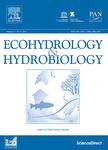版权所有:内蒙古大学图书馆 技术提供:维普资讯• 智图
内蒙古自治区呼和浩特市赛罕区大学西街235号 邮编: 010021

作者机构:Environmental Science Program Addis Ababa University Addis Ababa P.O. Box 20763 (home) Ethiopia International Water Management Institute Addis Ababa P.O. Box 5689 Ethiopia Department of Earth Science Addis Ababa University Addis Ababa P.O. Box 1176 Ethiopia
出 版 物:《Ecohydrology and Hydrobiology》 (Ecohydrol. Hydrobiol.)
年 卷 期:2010年第10卷第2-4期
页 面:211-221页
学科分类:0710[理学-生物学] 0908[农学-水产] 07[理学] 0707[理学-海洋科学] 09[农学]
基 金:CGIAR Addis Ababa University, AAU
主 题:Ethiopia Lake tana Water demand Water level Water resources development WEAP model
摘 要:The water resources of the Lake Tana catchments are largely untapped. Currently, water resource development is being promoted to stimulate economic growth. This study utilized the WEAP model to determine the likely impact of a number of possible development scenarios on lake water levels. For each scenario, the model was used to simulate water demand in three sectors (i.e. irrigation, hydropower and downstream environmental flows) over a 36-year period of varying flow and rainfall. The simulation results revealed that if all the planned development occurs on average 2198 GWhy-1 power could be generated and 677 Mm3 y-1 of water supplied to irrigation schemes. However, the mean annual water level of the lake would be lowered by 0.44 meters. As well as adverse ecological impacts this would have significant implications for shipping and the livelihoods of local people.